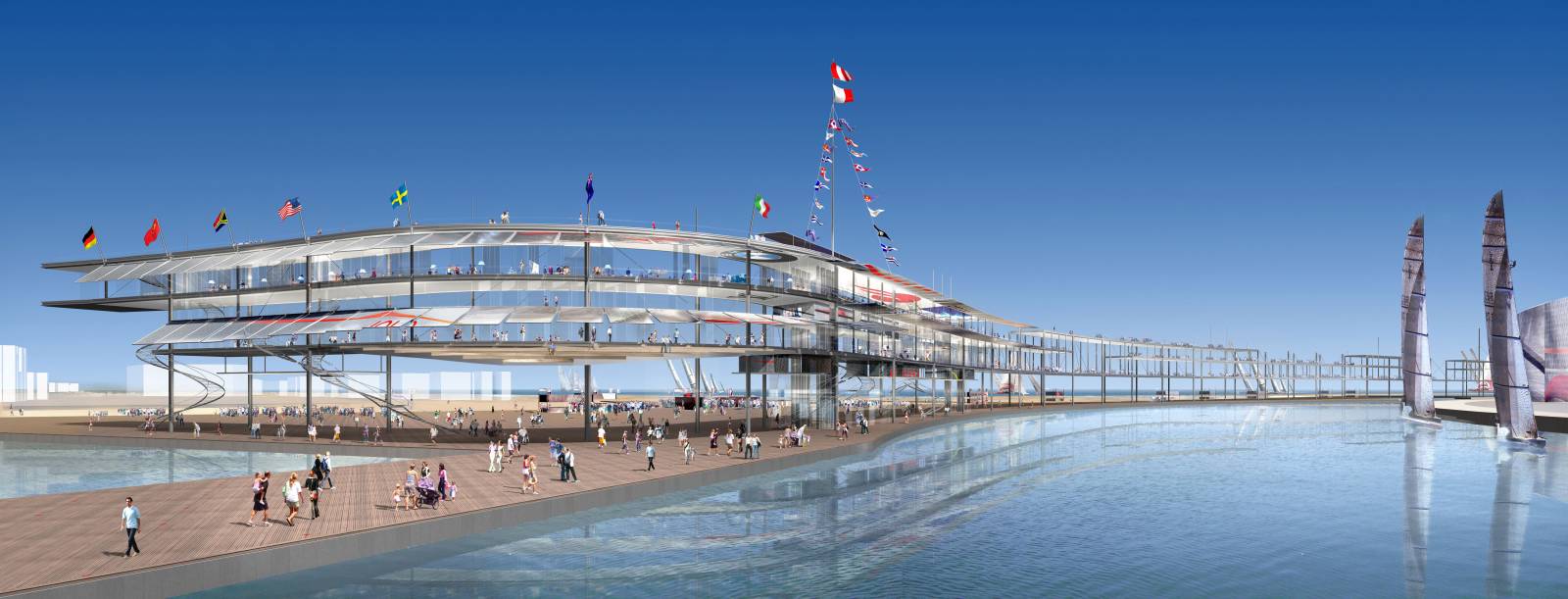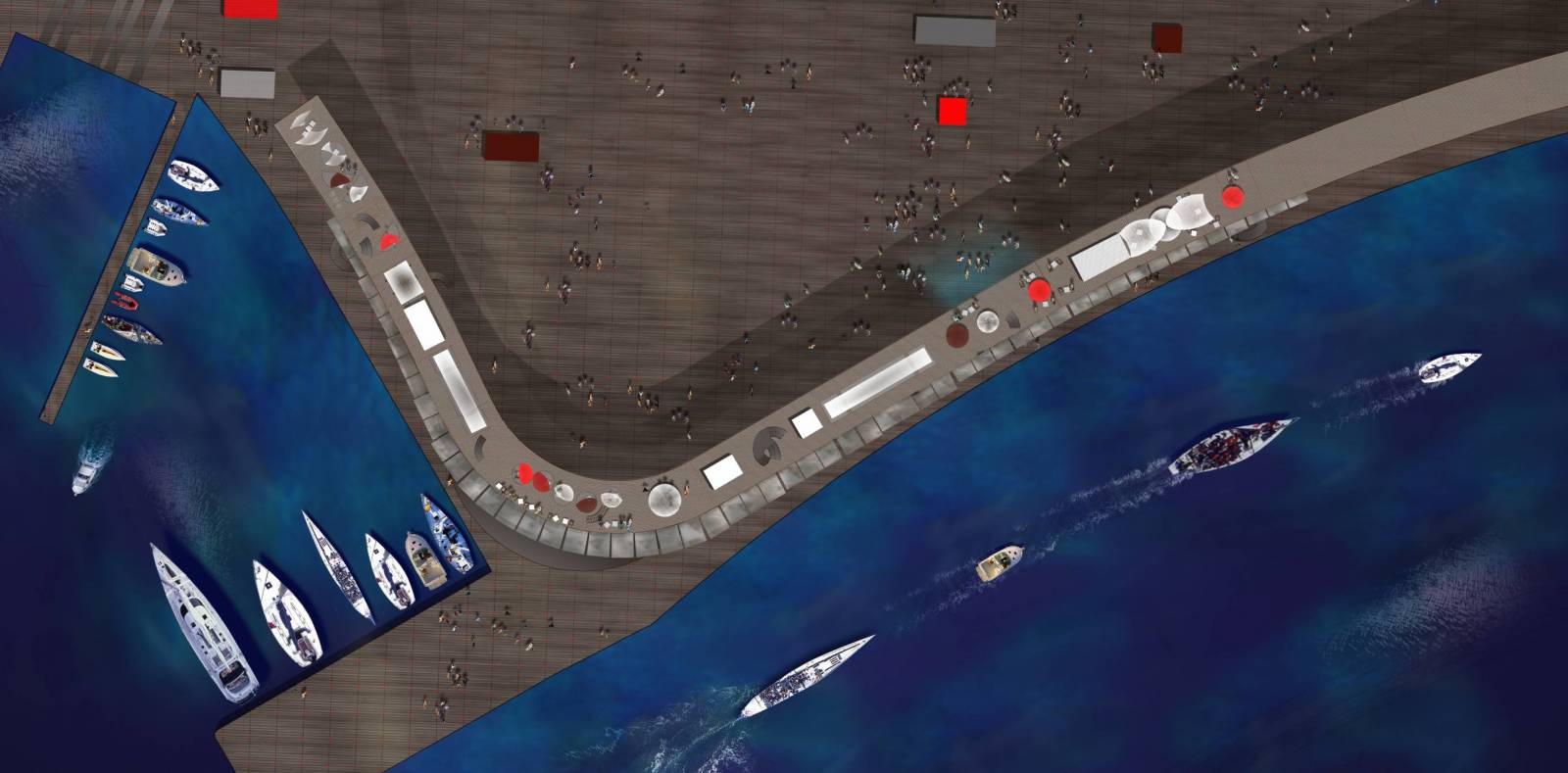America’s Cup Pavilion – The Foredeck
- Valencià, Spain
The theatre of the port
Valencia will convey an image of itself during the America’s Cup. This image will be broadcast on the screens of the whole world. Visitors will remember the city in relation to the emotions stirred by the spectacle of the regattas, but also the atmosphere created around the races.
Valencia must, then, develop and maintain for a long time to come the built trace of this legendary event.
How can we prove equal to the event and to the future of the port and the city, within the short and strict time limits allowed?
By creating an entertainment space that firstly showcases the trials of the America’s Cup and the ritual that goes with it; and then, the spectacle of the ports, one of them being heir to the event, but there are others: the fishing port, the industrial port, and the port young people hang out in. Finally, there’s the view of Malvarrosa Beach, which offers fresh perspectives.
This entertainment space will be a real theatre of the sea, looking out from the ‘stalls’ – but also from the balconies, where spectators will be able to see the boats in the harbour, see them leaving the harbour and then out on the sea sailing in the regatta. The balconies will have twin outlooks, over the port and the inlet channel on one side, and the sea on the other.
The Foredeck, then, will be made up of stalls plus three galleries on the port and the inlet channel with a view of the sea.
It’s a Meccano structure, as light as possible, with three wooden decks. Naval architecture in keeping with the handsome boats that compete in the race.
The upper deck will house furniture protected from the sun by light-weight canvas awnings; the second deck will house the function rooms of the main sponsors and the restaurant; the first deck will house the event lobby and offices; and the ground floor will accommodate shops. Ultimately, it will make an ideal place for a yacht club. And it’s a building in which the city will be able to lease commercial, office, restaurant and reception spaces. It’s the first step in a port development plan that will be followed by hotels, an auditorium, a fishing port, a training port and perhaps a Museum of the America’s Cup that will stretch south, on the other side of the channel, and could be symbolised, for the event, by a large back projection screen nightly replaying the spectacle of the regattas. A big curved balcony erected on the corner of the channel and the port, it will be a real open-air theatre that can seat 500 to 600 people, a festive place associated with the Valencian rituals.
So, the architecture will be a Meccano set with all of the components creating an esthetic appropriate to the America’s Cup. The framework will be matt titanium grey, with a deeper grey for the clamps, although they’ll also be matt like carbon; the awning ceilings will be made of kevlar and carbon-thread materials – or something similar – which will evoke the canvas of the rigging and the graphics of the sails of the boats in the America’s Cup.
The wooden decks and the furnishings will also be inspired by the world of sailing. Framed on TV, the building will directly speak to the event, the place, the city. A building as light, transparent, and airy as this, built on the esthetic of the race, spells: the port of Valencia welcomes the America’s Cup.
The Foredeck will extend into a walkway over AC Park and several light and open galleries from which you’ll be able to follow the progress of the boats. Ultimately, these balconies could also house restaurants, meeting places or shops linked to the sea.
The contrivance put in place will be manufactured during construction of the car parks. It can be dry-mounted very quickly. It’s precise and finely calibrated. It’s a piece of maritime and theatre machinery. This mountable architecture – a rack fitted with awnings, glazed modules on rails, various items of furniture – ensures the crucial timing is respected.
But that’s architecture for you. Constraint gives rise to an esthetics, that esthetics to one more page in the history of the town.
Jean Nouvel



